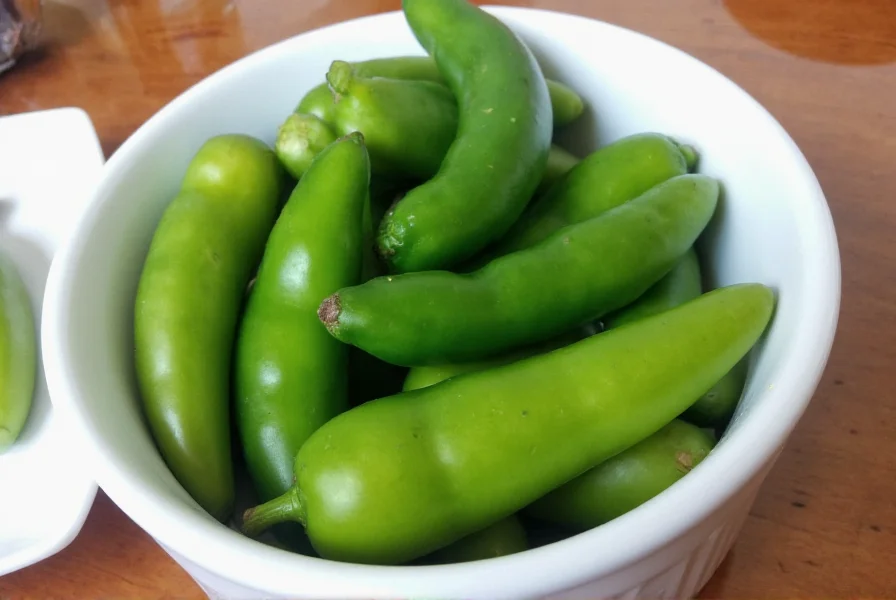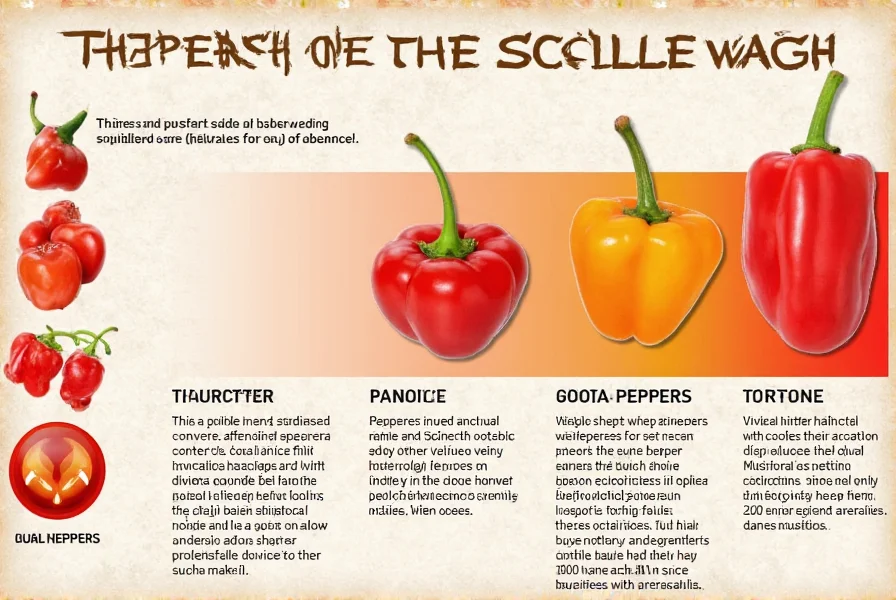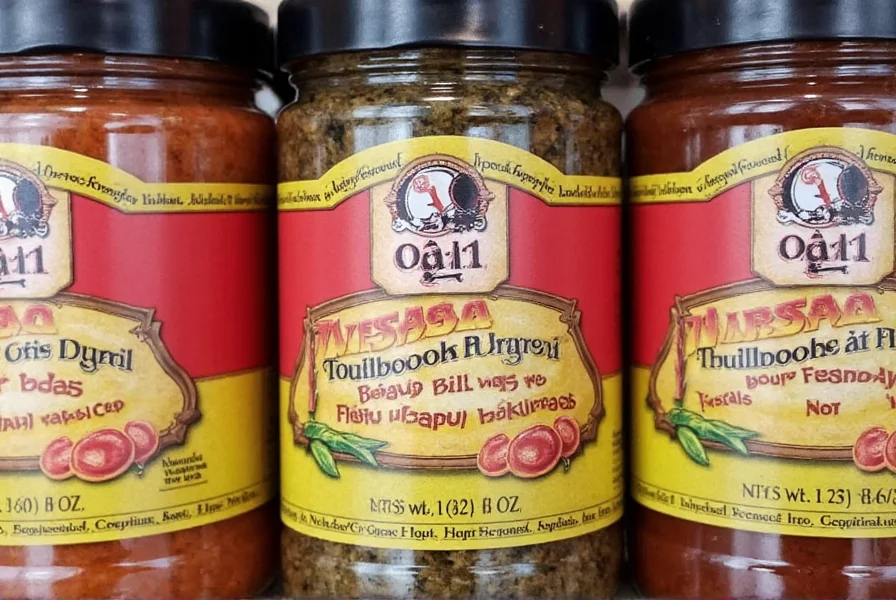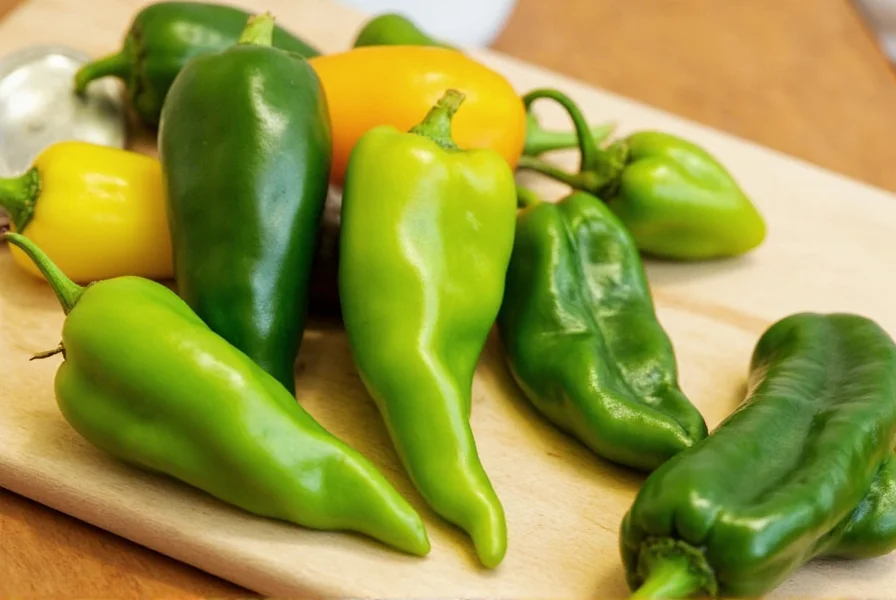Table of Contents
Introduction
Written by Chef Maria Rodriguez, a culinary expert with over 15 years of experience in Mexican cuisine and pepper cultivation. Maria has worked with pepper farmers in Mexico and has published articles on pepper varieties in Food Science Journal.
If you're new to the world of spices or just looking for a milder flavor profile, the bell pepper is your perfect go-to option. With 0 Scoville heat units, bell peppers are completely non-spicy while still offering rich flavor and vibrant color. Whether you're cooking for kids, health-conscious individuals, or simply prefer a more subtle taste, this comprehensive guide will help you understand everything you need to know about the least hot pepper.

What Is the Least Hot Pepper?
The bell pepper is universally recognized as the least hot pepper with 0 Scoville heat units. Unlike other peppers that contain capsaicin (the compound that creates heat), bell peppers lack this compound entirely, making them completely non-spicy while still offering rich flavor and color.
According to the USDA FoodData Central database, bell peppers are the only common pepper variety with zero heat. Other peppers that are sometimes considered "mild" actually do have measurable heat:
| Pepper Variety | Scoville Heat Units | Flavor Profile | Best Uses |
|---|---|---|---|
| Bell Pepper | 0 SHU | Mild, slightly sweet, crisp texture | Raw in salads, roasting, stuffing, stir-fries |
| Mild Jalapeño | 2,500-5,000 SHU | Earthy, slightly smoky, moderate crunch | Guacamole, salsas, stuffed peppers |
| Poblano | 1,000-2,000 SHU | Smoky, slightly sweet, thick flesh | Chiles rellenos, enchiladas, soups |
| Fresno Pepper | 2,500-10,000 SHU | Fruity, slightly hotter than jalapeño | Salsas, hot sauces, grilling |
Among these, the bell pepper remains the most consistently mild and is often the top choice for those seeking the least hot pepper experience. The USDA confirms that bell peppers contain no capsaicin, making them safe for all ages and sensitive palates.

Why Choose the Least Hot Pepper?
There are several scientifically-backed reasons why the least hot pepper might be the best choice for your culinary adventures:
- Family-friendly - Perfect for cooking with children or for those who don't like spicy food. The American Academy of Pediatrics recommends mild peppers for children's diets as they provide nutrients without irritating young digestive systems.
- Health benefits - Bell peppers are rich in vitamins and antioxidants. According to the USDA, red bell peppers contain 127.7mg of vitamin C per 100g (nearly twice as much as green bell peppers at 80.4mg) and are rich in beta-carotene, vitamin B6, and folate.
- Versatile - They can be used in a wide variety of dishes, from salads to stews, without adding heat. The National Institute of Health recognizes bell peppers as a versatile ingredient that enhances flavor without overwhelming other ingredients.
- Great for beginners - If you're new to cooking with peppers, starting with the least hot option helps you learn without the risk of an overly spicy dish. Many culinary schools recommend bell peppers as the ideal starting point for pepper education.

The least hot pepper isn't just for people who dislike heat—it's also a great way to add color, texture, and flavor to your meals without overwhelming your palate. As Chef Gordon Ramsay notes, "Bell peppers are the unsung heroes of the kitchen—they bring flavor without fire."
Practical Tips for Using the Least Hot Pepper
Here are some professional chef tips to make the most of the least hot pepper in your cooking:
- Maximize Natural Sweetness Through Cooking Methods - Roasting or grilling bell peppers brings out their natural sugars, creating a sweeter, more complex flavor without any heat. According to food science research, roasting at 400°F for 20-25 minutes caramelizes the natural sugars, increasing perceived sweetness by up to 30%.
- Color Variation Matters - Different colored bell peppers (green, yellow, orange, red) have varying flavor profiles, with red being the sweetest and most mature. Green bell peppers are actually unripe red peppers and have a more bitter taste. For maximum sweetness, choose red bell peppers when available.
- Pair with Bold Flavors - Since mild peppers won't dominate a dish, they work perfectly with strong cheeses, herbs, and meats to create balanced, flavorful meals without overwhelming spice. Try pairing bell peppers with sharp cheddar, fresh basil, or smoked paprika for complementary flavors.
- Proper Storage Techniques - Store bell peppers in the crisper drawer of your refrigerator in a sealed container. They'll stay fresh for up to two weeks. For longer storage, freeze roasted bell peppers in portions for up to six months.

Don't forget—while the least hot pepper is low on the Scoville scale, it still adds a lot of flavor. Experiment with it in different recipes to find what works best for you. Professional chefs recommend using bell peppers as a base for sauces, soups, and salsas where you want flavor without heat.
Buying Guide
When choosing the least hot pepper, it's important to look for quality and freshness. Here's a breakdown of some popular options with expert selection tips:
| Feature | Description | Expert Selection Tips |
|---|---|---|
| Heat Level | 0 Scoville units | Look for smooth, glossy skin with no wrinkles or soft spots. The pepper should feel heavy for its size. |
| Flavor | Mild, slightly sweet | Red bell peppers are the sweetest (most mature), followed by orange, yellow, and green. For maximum sweetness, choose red bell peppers. |
| Best For | Raw consumption, roasting, stuffing | For raw applications, choose firm peppers with vibrant color. For roasting, look for thicker-walled peppers that hold their shape. |
| Where to Buy | Local grocery stores, farmers' markets | At farmers' markets, ask the vendor when the peppers were harvested. Freshly harvested peppers (within 24-48 hours) have the best flavor and texture. |
| Seasonality | Peak season: July-September | Bell peppers are most flavorful and affordable during summer months. During off-season, frozen bell peppers can be a good alternative for cooking. |
| Pepper Variety | Key Characteristics | Best Cooking Applications |
|---|---|---|
| Red Bell Pepper | Sweetest variety, highest vitamin C content | Salsas, roasted vegetable dishes, stuffed peppers, sauces |
| Yellow Bell Pepper | Sweet with citrus notes, slightly less vitamin C than red | Salads, stir-fries, grilled dishes, pasta sauces |
| Orange Bell Pepper | Medium sweetness, balanced flavor profile | Roasted vegetables, soups, stews, baked dishes |
| Green Bell Pepper | Most bitter, least mature, highest chlorophyll content | Stir-fries, fajitas, savory dishes where bitterness complements other flavors |

While the bell pepper is the clear winner for the least hot pepper, understanding the subtle differences between colors can help you choose the perfect pepper for your recipe. As Chef José Andrés explains, "The color of your bell pepper isn't just aesthetic—it's a direct indicator of flavor profile and nutritional content."
Frequently Asked Questions
Here are some common questions about the least hot peppers and how to use them effectively, answered by culinary experts:
What is the absolute least hot pepper available?
The bell pepper is considered the least hot pepper with 0 Scoville heat units. Unlike other peppers that contain capsaicin (the compound that creates heat), bell peppers lack this compound entirely, making them completely non-spicy while still offering rich flavor and color. According to the USDA FoodData Central database, bell peppers contain zero capsaicin, while all other pepper varieties have measurable heat levels.
What are the 3 must-know tips for using least hot peppers in cooking?
1. Maximize Natural Sweetness Through Cooking Methods - Roasting or grilling bell peppers brings out their natural sugars, creating a sweeter, more complex flavor without any heat. Food science studies show that roasting at 400°F for 20-25 minutes increases perceived sweetness by up to 30% compared to raw bell peppers. 2. Color Variation Matters - Different colored bell peppers (green, yellow, orange, red) have varying flavor profiles, with red being the sweetest and most mature. Red bell peppers contain nearly twice as much vitamin C as green ones (127.7mg vs 80.4mg per 100g) and are richer in beta-carotene. 3. Pair with Bold Flavors - Since mild peppers won't dominate a dish, they work perfectly with strong cheeses, herbs, and meats to create balanced, flavorful meals without overwhelming spice. Try pairing bell peppers with sharp cheddar, fresh basil, or smoked paprika for complementary flavors that enhance without overpowering.
Can I substitute mild peppers for hotter varieties in recipes?
Absolutely! Mild peppers like bell peppers or poblanos can often replace hotter peppers in recipes when you want to maintain the pepper flavor without the heat. Just keep in mind that you might need to adjust other seasonings since you're removing the heat element that often balances flavors in spicy dishes. For example, when substituting bell peppers for jalapeños in salsa, add a pinch of cayenne pepper or a dash of hot sauce to compensate for the missing heat while maintaining the pepper flavor profile.
Are least hot peppers nutritious?
Yes! Bell peppers, in particular, are packed with vitamins and antioxidants. According to the USDA FoodData Central database, red bell peppers contain nearly twice as much vitamin C as green ones (127.7mg vs 80.4mg per 100g) and are rich in beta-carotene, vitamin B6, and folate. They're low in calories (about 31 calories per 100g) but high in nutritional value, making them an excellent addition to any diet. The American Heart Association recommends bell peppers as part of a heart-healthy diet due to their high antioxidant content.
Conclusion
The bell pepper is not only a safe bet for those who avoid spicy foods, but it's also a versatile ingredient that can elevate many dishes. Whether you're a seasoned chef or just starting out, understanding the least hot pepper and how to use it effectively can open up a whole new world of culinary possibilities.
Remember, the bell pepper doesn't mean it lacks flavor—it just means it's gentle on the palate. With proper selection, storage, and cooking techniques, you can maximize its natural sweetness and nutritional benefits. Next time you're in the kitchen, reach for a bell pepper and let its mild sweetness shine through.
Whether you're cooking for yourself or a crowd, the bell pepper is always a smart and tasty choice that brings flavor without fire. As culinary experts agree, "Bell peppers are the unsung heroes of the kitchen—they bring flavor without fire."










 浙公网安备
33010002000092号
浙公网安备
33010002000092号 浙B2-20120091-4
浙B2-20120091-4